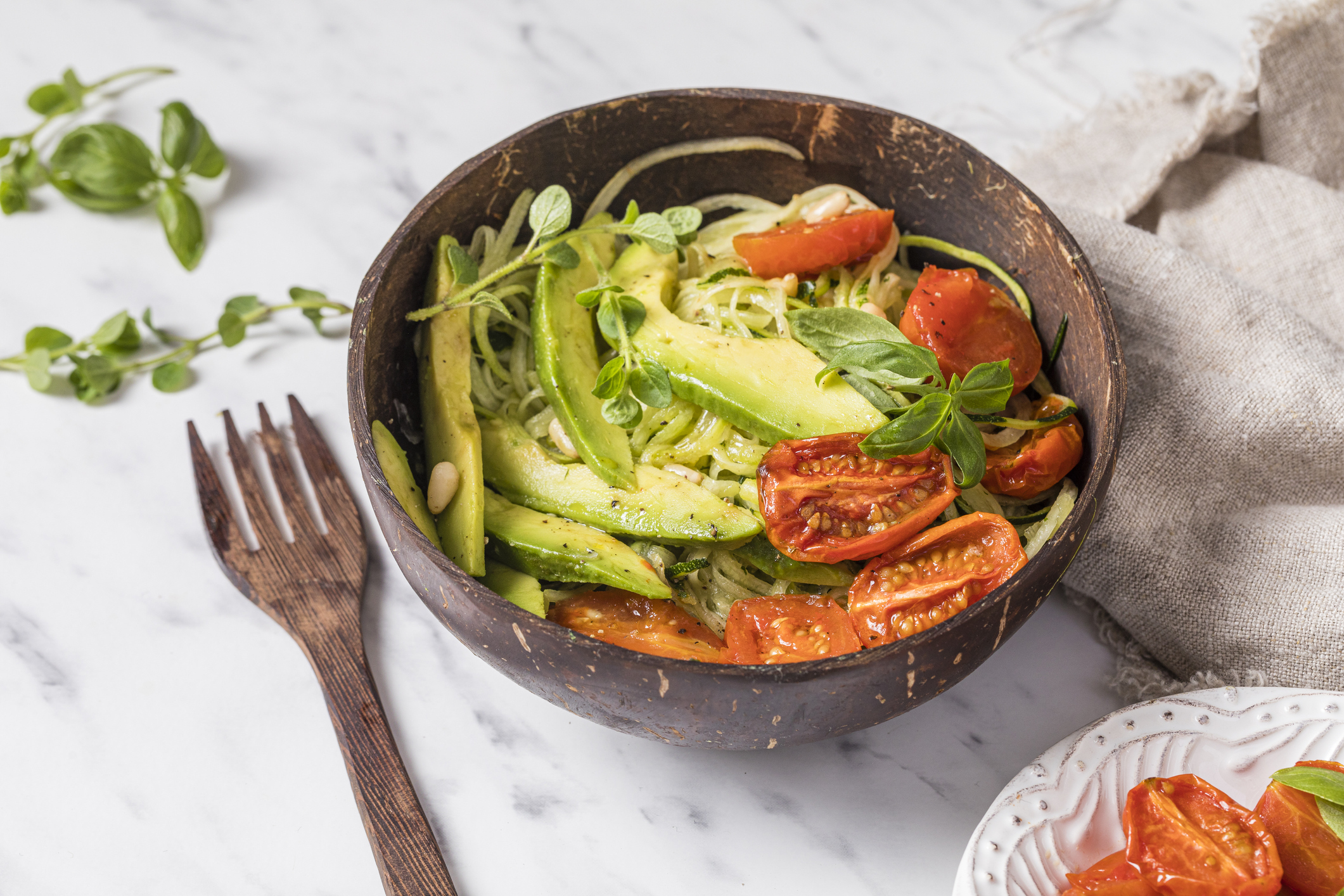
The Ketotarian Diet is a high-fat, moderate protein and very low carb eating plan that eliminates meat and dairy and focuses on plant-based sources of fat and protein. Ketotarian foods include eggs and fish if you’re a vegetarian, but not if you’re vegan. Your macronutrient breakdown on the Ketotarian Diet typically looks like this:
- 5% of your calories should come from carbs, which is about 25 grams of
- Net Carbs or less.
- 70 to 75% of your calories come from fat.
- 20 to 25% of your calories come from protein.
So, how does the Ketotarian Diet compare to a plant-based version of Atkins®? The keto diet is already considered more restrictive and less sustainable than Atkins, and when you add the constraints of eliminating meat and dairy, as you do on a Ketotarian meal plan , it becomes even more constrictive.
With that being said, it’s quite possible to do a plant-based low carb diet that is still keto-friendly. Both Atkins 20® and Atkins 40® are considered ketogenic, because you are burning fat for fuel instead of sugar from carbs. But unlike the stricter keto diet, Atkins 20 and Atkins 40 are considered more sustainable forms of keto because you have more flexibility, wider food choices and a better balance of macronutrients, while still creating that coveted fat-burning metabolism.
Since there’s a little more room for protein on Atkins than in a Ketotarian meal plan, you have more choices that will keep your appetite satisfied while you’re achieving your goals. You need to eat enough protein to supply your liver with amino acids, which helps make new glucose for the cells and organs in your body that can’t use ketones for fuel. Eating too much protein can suppress ketosis, but not eating enough can lead to a loss in muscle mass, as well as hunger.
If you’re a vegetarian, you can get your protein from ketotarian foods like eggs, legumes, nuts and soy products. Vegans can get sufficient protein from seeds, nuts, soy products, soy and rice cheeses, seitan, legumes and high-protein grains like quinoa. The key is to focus on high-quality whole foods and plenty of high-fiber veggies. Cutting out meat and dairy doesn’t mean swapping them out for plant-based choices that aren’t as healthy. For example, French fries are plant-based, but probably not the best choice, nor is filling your plate every meal with processed “faux” meat foods.
If you’d like to do a more balanced and sustainable version of the Ketotarian Diet, try Atkins 20, Phase 2 or Atkins 40 while eliminating meat and some dairy. You can start with this keto-friendly Vegetarian Meal Plan or this keto-friendly Vegan Meal Plan.